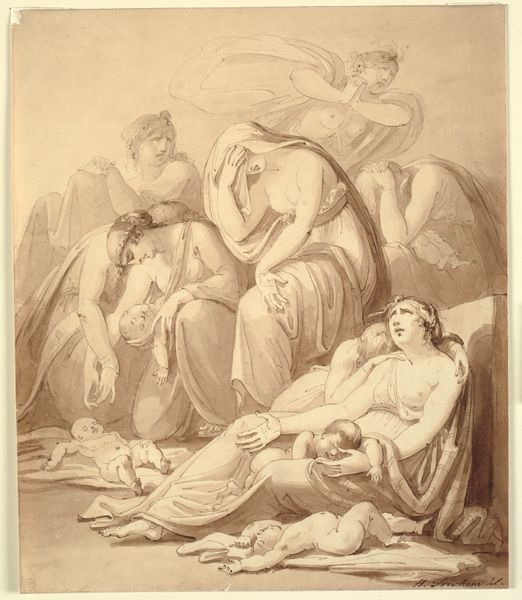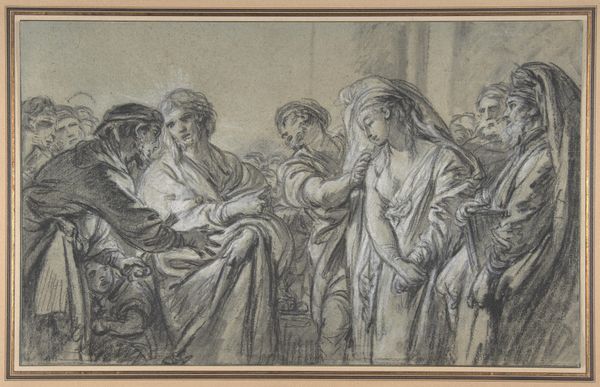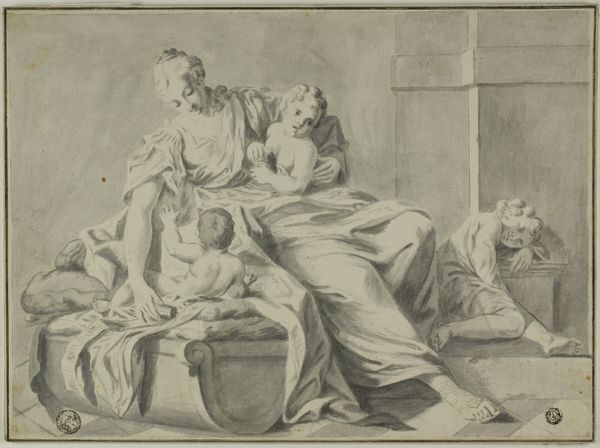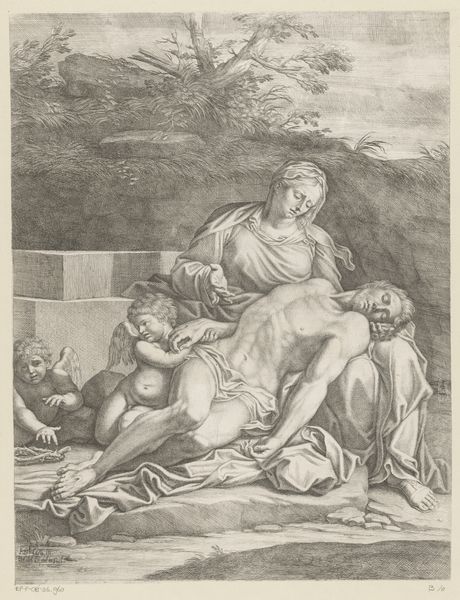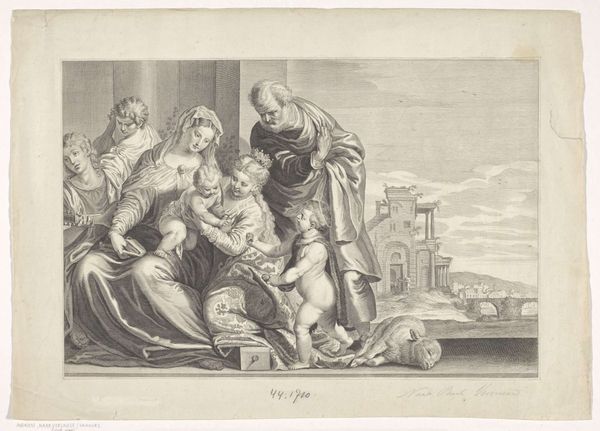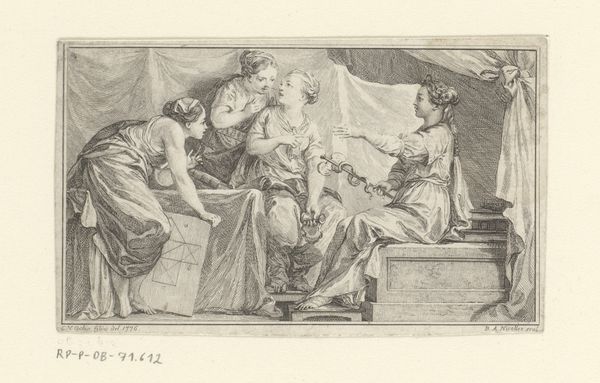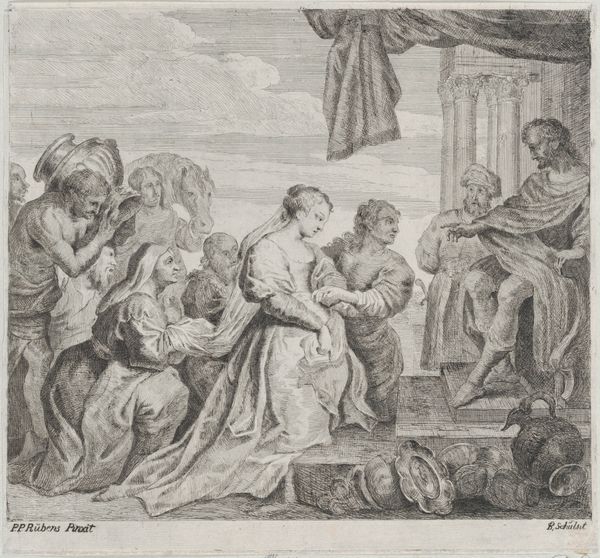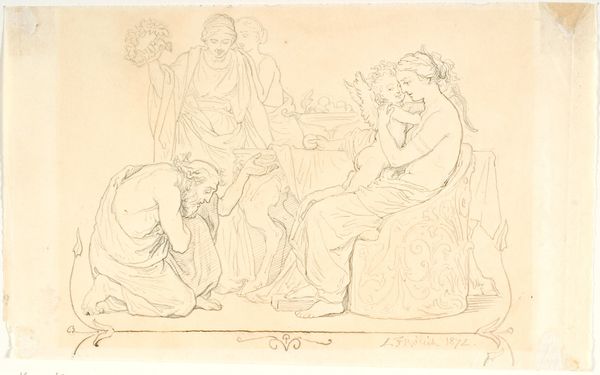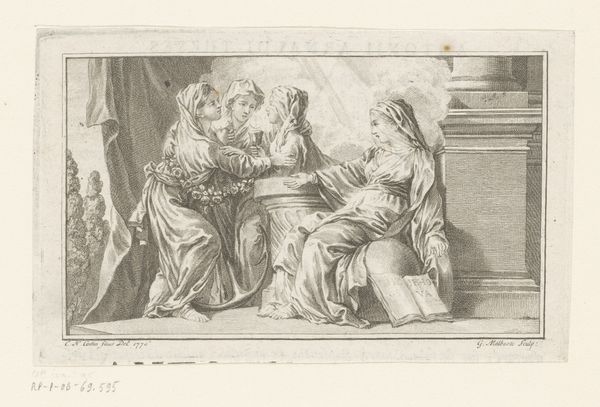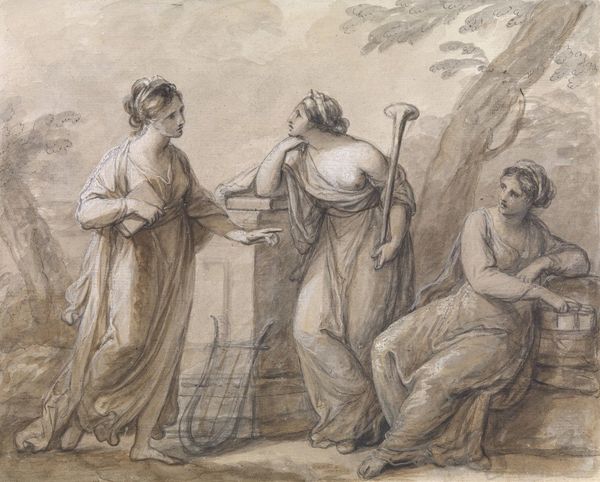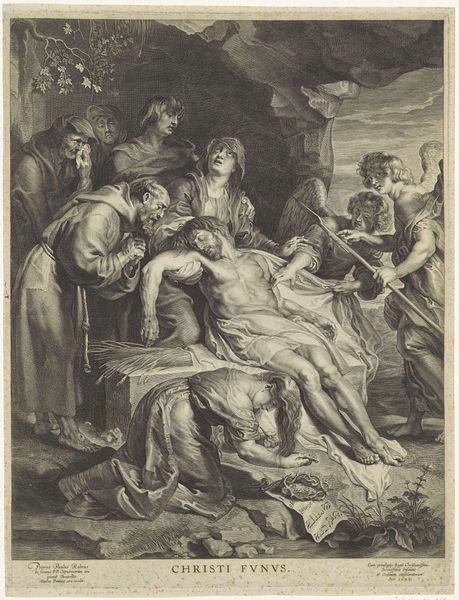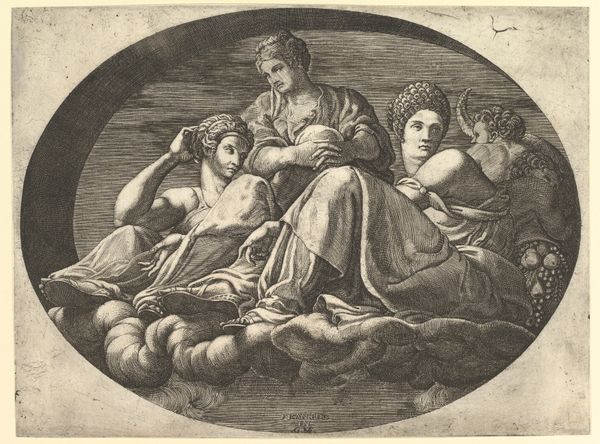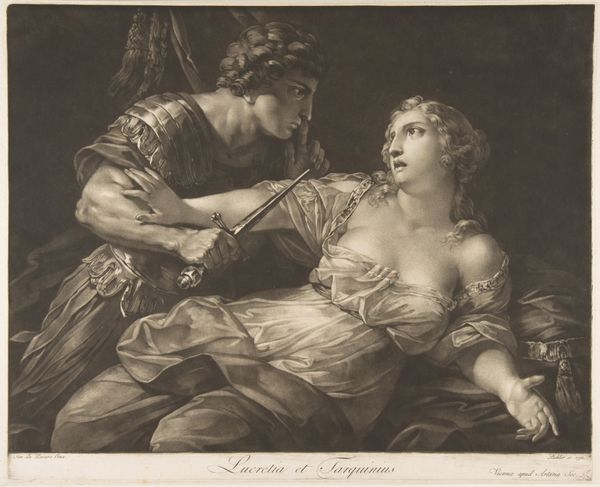
drawing
#
drawing
#
allegory
#
baroque
#
figuration
#
pencil drawing
#
15_18th-century
#
history-painting
Copyright: Public Domain
Editor: Here we have Nicolas Régnier’s "Dying Cleopatra," a drawing from 1738, housed at the Städel Museum. The sepia tones give it a very somber and antique feel, and Cleopatra's languid pose is quite striking. What strikes you most about it? Curator: The enduring power of the Cleopatra mythos, even then! Observe how Régnier taps into established visual symbols: the asp, the letter... these weren't just props; they were keys unlocking shared cultural memories. How do you think audiences of the time would interpret these images? Editor: Probably with a strong sense of tragedy and the fall of a great queen. I'm also curious about the women surrounding Cleopatra. Are they simply mourners? Curator: In a way, yes, but also more than that. Note their specific expressions: Grief, certainly, but also shock, resignation. Régnier captures how death resonates outwards, rippling through the lives of those left behind. These weren't stock figures but echoes of emotional archetypes viewers recognized implicitly. The figures invite viewers to reflect upon a certain narrative that embodies political themes, but more intensely reflects ideas about love and sacrifice that echo in our modern experiences. Do you think such connections between art and its audiences fade or persist through time? Editor: That’s a great question. I think they evolve. While the historical context might become less clear, the emotions remain powerfully accessible, speaking to universal human experiences. Curator: Exactly! That's how symbols function. Their meanings shift and deepen over time, continually informed by cultural and psychological shifts. Even in our time, Cleopatra is an iconic name. Editor: I've certainly learned to appreciate the way symbols are embedded in our cultural memory, especially when it comes to such prominent historical narratives! Curator: Indeed. A reminder that images don't merely reflect; they actively shape how we perceive and remember.
Comments
No comments
Be the first to comment and join the conversation on the ultimate creative platform.
